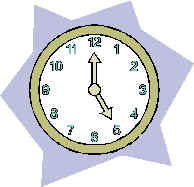| Home | Syllabus | Main Lecture Schedule | Honors Lecture Schedule | Homework | Lecture Videos |
![]()
|
PHYS-3053 Honors Electricity and Magnetism I is a more in-depth version of PHYS3033 Electricity and Magnetism I and designed for more enthusiastic students who wish to acquire a deeper understanding of the subject. Students taking this course instead of PHYS3033 will benefit from the more vigorous approach and can build a solid foundation for possible graduate studies and research in future. The course requires the following prerequisites: Students must have passed PHYS1114 or General Physics II with a grade of B- or above and they must have taken PHYS1314 Honors General Physics II. Students will follow the same lecture as the PHYS-3033 students but with an additional 50 minutes lecture, during which additional topics will be introduced. The assignments and examination problems will be more challenging than in PHYS-3033.
Intermediate Electricity and Magnetism I, provides a more mathematical approach than the first year courses on the same topic. It is a required core course in the undergraduate education and followed by an elective course: PHYS-3034, Intermediate Electricity and Magnetism II. The electromagnetic phenomena covered and the mathematical tools introduced are important in a wide range of technological areas. The course starts with a review on the important mathematical concepts such as vector calculus. In the following, these concepts are applied to electrostatics in vacuum and in matter. In the third chapter, special techniques for solving electrostatic problems such as the Laplace’s equation are discussed. In the second half of the course, we are having a close look on the relation between currents and magnetic fields and the effect of magnetic fields in matter. We discuss the phenomena of magnetism in the framework of the concepts of bound currents and finally introduce in detail the Maxwell Equations in vacuum and in matter. In the end, we have a brief look on electromagnetic waves.
|
Dr. LORTZ, Rolf Walter
| ||||||||

|
Name |
Phone |
Office |
|
Office Hours |
| Kwok King Wai Kevin | 3469 2264 | 4469 | kwkwokaa@ust.hk | By appointment per email |
| Lau Kai Ming | 2358 7528 | 4468 | minglau@ust.hk | By appointment per email |
| Ng Ka Ho Tony | 2358 7528 | 4468 | tonykhng@ust.hk | By appointment per email |
 Schedule
Schedule| Main Lectures (together with Phys3033) | Wednesday, Friday 3:00 - 4:20 pm | LORTZ, Rolf Walter Rm 2464, Lift 25/26 |
| Additional Honors Lecture
|
Tuesday 6:00-6:50 pm |
Rm: 4502 (Lift 25/26) |

Introduction to Electrodynamics (3rd Ed.) by David J. Griffiths
Course Reserve available at the Reserve Counter of the Library on a 2 hour loan basis
![]()
| Assignments | 10% |
| Midterm | 40% |
| Final Examination | 50% |
![]()
|
On successful completion of this course, students are expected to be able to:
|
Wepage of the instructor: http://physics.ust.hk/lortz/
![]()